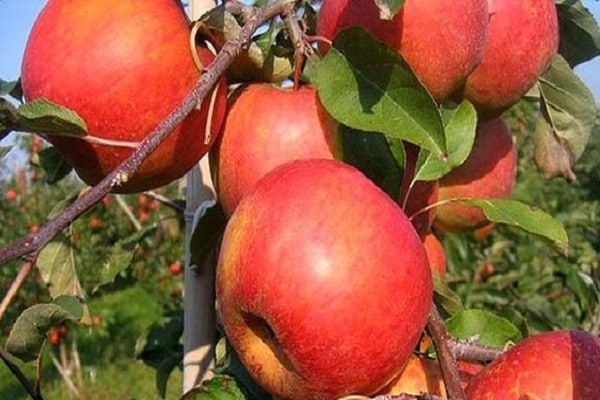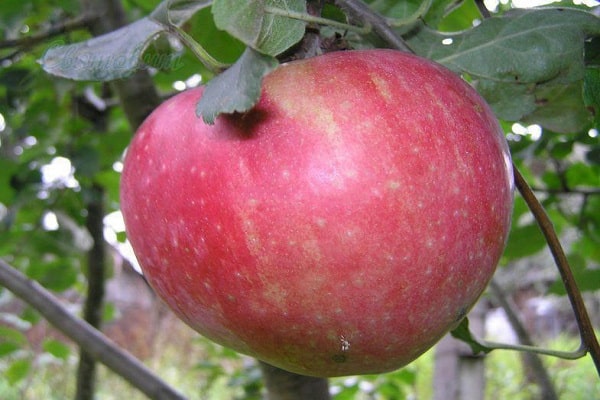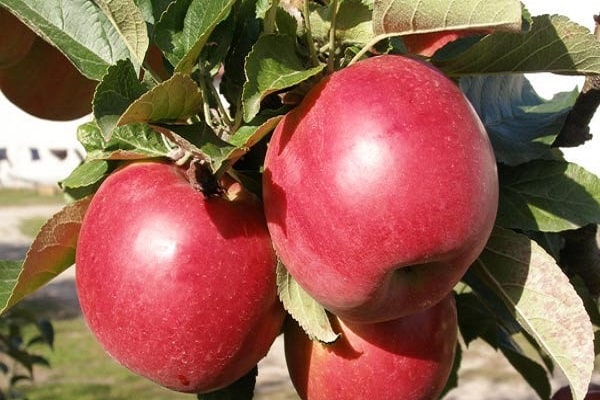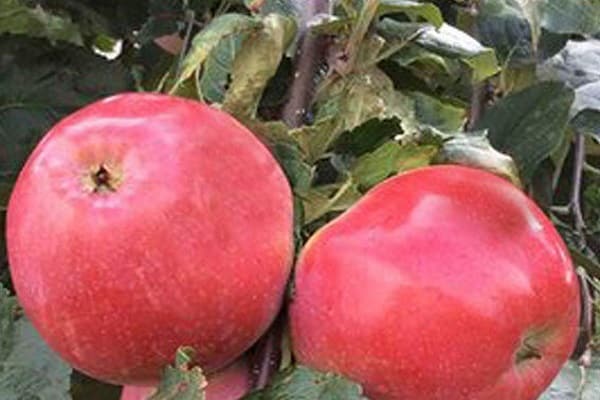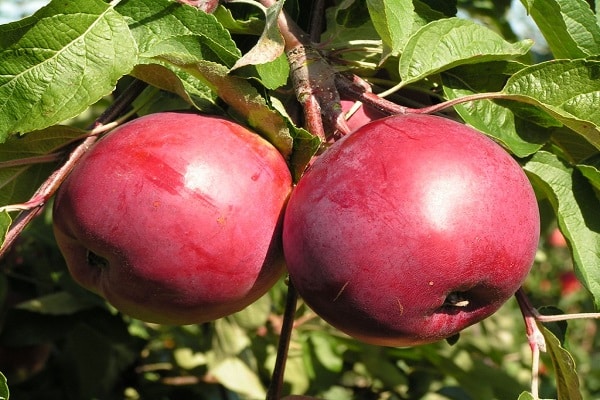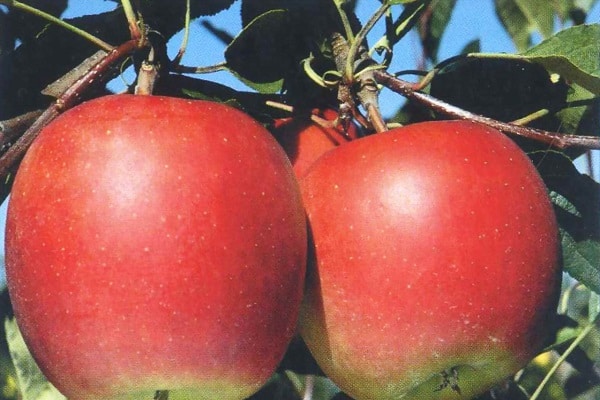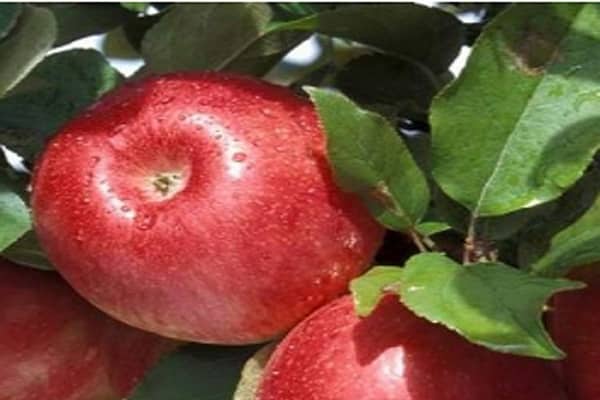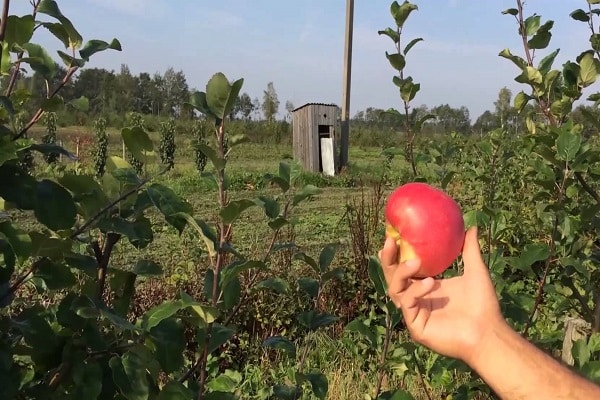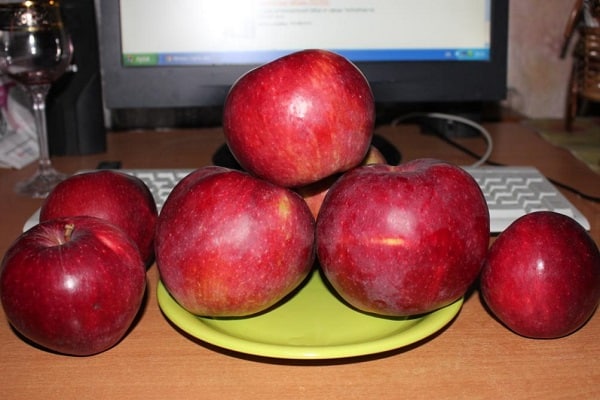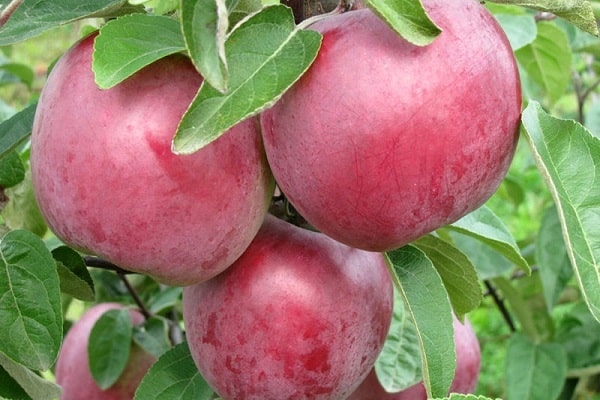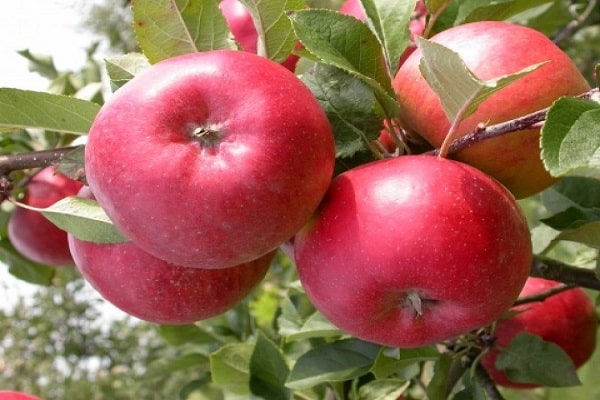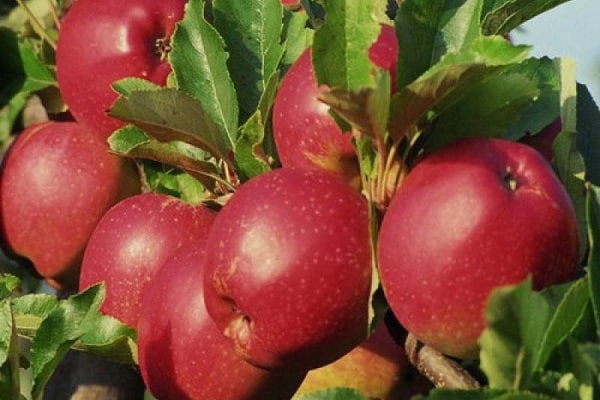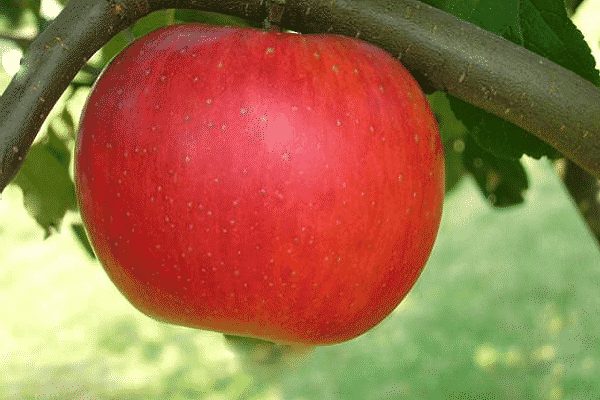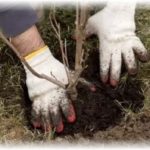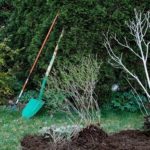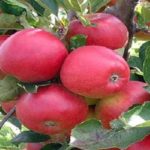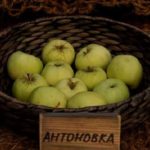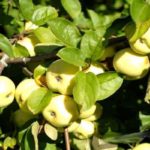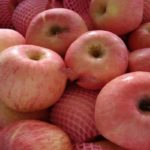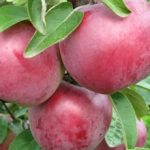Whatever the variety, before purchasing, the summer resident seeks detailed information about the characteristics and features of the selected type of tree. Rubin apple trees have many positive reviews, which adds to their popularity. The tree must be looked after, the crown must be formed correctly and disease-affected and deformed branches must be promptly removed.
Description of the variety
To make a decision about growing the Rubin apple tree variety, a summer resident needs to study all the available information.Based on the description, understand how to properly plant a tree and care for it.
The Czech selection of the variety is very close to the German variety Rubin Star. It is grafted onto a mm-106 or mm-26 rootstock. As a result, the tree is lower, and harvesting is much easier:
- the crown is beautiful, spreading, skeletal branches hang down;
- the back side of the leaves is heavily pubescent, dark green in color, oblong in shape;
- snow-white flowers, characteristic of an apple tree;
- the tree is long-lived, from sources it turns out that some specimens reach 50 years of age;
- the shape and weight of the fruits are almost the same;
- apple weight 500 g;
- The color of the fruit is yellow, covered with a layer of pink on top;
- thin skin;
- the pulp is dense;
- taste with sourness;
- can be stored for a long time.
Ready-to-eat fruits have a ruby hue. Summer residents choose this variety for the high taste characteristics of the fruit and the ability to preserve fresh fruit for a long time at home.
Advantages and disadvantages of the variety
Ruby, like other varieties of apple trees, has positive and negative characteristics. Each gardener discusses their significance differently, so they draw their own conclusions. This is due to different attitudes towards certain characteristics.
Pros:
- high productivity;
- excellent taste of fruits;
- the apples are large, almost identical;
- are stored for a very long time;
- the tree does not require special care;
- winter hardiness;
- high immunity to diseases.
When optimal storage conditions are created, the presentation and taste characteristics are preserved until mid-spring.
Minuses:
- bears fruit for the first time in the 5th year without care;
- requires crown formation;
- requires preventive treatments against pests and some diseases.
If the requirements of agricultural technology are met, problems with cultivation should not arise. It is important to be patient and follow the recommendations.
Tree dimensions
The Ruby apple tree is very spreading and vigorous. The tree reaches a height of 4 m. When grafted on a special rootstock, the height is 2.5 m. The seedling grows at a particularly rapid rate in the first few years. Then the intensity subsides, and the apple tree stops stretching upward.
On wild rootstock, the apple tree grows up to 5 m and is less demanding in terms of crown formation. In this case, they can do without it.
Productivity and taste of fruits
The peculiarity of Ruby apple trees is that from the moment of the first fruiting, the volume of the harvest constantly increases. The increase continues for 7 years. They do not observe periodicity. The variety is capable of producing crops for many years in a row.
An important condition is compliance with agrotechnical requirements. Proper care leads to stabilization of the harvest.
The taste of Rubin's apples is excellent. According to tasters, it is almost 4.9 points out of 5 possible. The characteristic sourness is refreshing, and the aroma of the fruit remains throughout the entire storage period.
Winter hardiness
This variety of apple tree tolerates winter well, but summer residents advise covering the tree trunk. For insurance, use dry grass or plant residues.
Disease resistance
The apple tree is resistant to powdery mildew and scab. But despite this, preventive treatment is required in spring and autumn. They use folk remedies and chemicals.
Bait traps are used to control pests. Their composition depends on what insect the gardener is fighting.
Timing of flowering and fruit ripening
The apple tree blooms from the beginning of April, depending on the growing region, the dates shift in both directions.Ripening occurs at the end of September. At this time, it is necessary to remove the Ruby apples and put them away for storage.
The shelf life of the fruit is high and the fruits are in demand on the market. In addition to appearance, the aroma and taste of apples are preserved.
Before cleaning the storage premises, you should carefully sort out the fruits. Large, even specimens without defects are selected. They are placed in wooden boxes and sprinkled with straw or sawdust. Periodically during the winter you should sort through them, removing spoiled apples. If stored properly, the fruit will last until mid-March.
Regions of growth
The Ruby variety grows in many regions; breeders have tried to instill resistance to low temperatures, drought and diseases characteristic of the crop.
Pink Ruby has several apple trees with similar characteristics. These are Rubin Gold, Rubin Star, Rubin Dark. These trees have high immunity to diseases, are resistant to cold and are able to produce crops without interruption. Distinctive features are some external characteristics. Size of the tree, shape and color of the fruit. Otherwise they are almost similar.
Reviews from gardeners regarding the Ruby apple tree
Summer residents who grow fruit trees purchase varieties that best satisfy the needs of the family. Apples are grown for fresh consumption, winter storage and processing. A novice gardener is confused and finds it difficult to make a choice on his own. He addresses experienced like-minded people who have already dealt with this variety:
- Samira: “The apple tree is a semi-dwarf variety of fruit trees. Therefore, summer residents choose it for growing in garden plots.It has been growing for me for 5 years. Although the harvest is not very large, I love it for its excellent taste and aroma. I store the fruits in the refrigerator. They can last for more than six months without losing their taste or appearance. If stored in boxes with sand, they will last 4-5 months. The apple tree suffers from powdery mildew, so we have to treat it.”
- Alexey: “The family loved the delicious fruits of this apple tree. I have been growing it for 4 years, the yield is good, and I periodically struggle with pests and diseases. I try to treat it with folk remedies, but it doesn’t always help. That's why we have to use chemistry. Otherwise, it’s an excellent apple tree that doesn’t require much effort or time to care for.”
- Anastasia: “After reading the reviews, I decided to try growing my own apple tree. I took a seedling on a wild rootstock, many summer residents advised. Less maintenance, higher yield, stronger tree. So far everything is justified, except for the harvest, of course. I try not to interfere too much; the seedling has been growing for 3 years. There is no special care for it, I just water it and periodically add maintenance fertilizers. I’m waiting for the first fruits.”
Growing a Ruby apple tree is a labor-intensive task. The plant requires crown formation and fertilizing. A tree without care does not produce the declared yield. Therefore, there is no need to set up in advance, which will be easy and simple.

